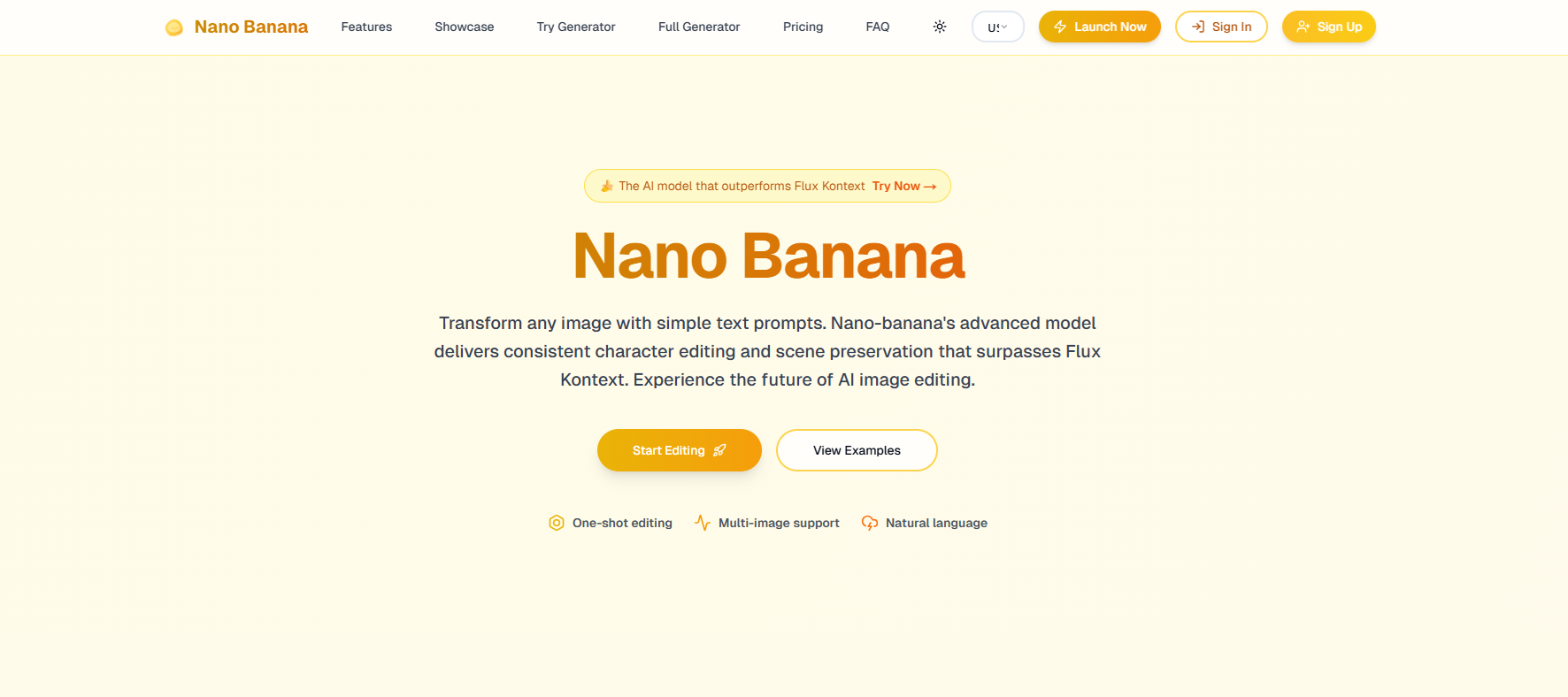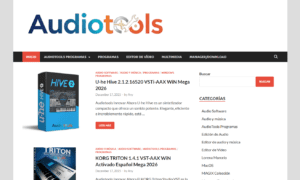The artificial intelligence image editing landscape has become increasingly competitive, with multiple models claiming superiority in various aspects of performance. Two platforms that consistently emerge in professional discussions are advanced Google-developed technology and Flux Kontext. Understanding the technical differences, performance benchmarks, and practical applications of these competing systems is crucial for professionals making informed technology adoption decisions.
Understanding the Competitive Landscape
The AI image editing market has matured significantly, with several platforms offering sophisticated capabilities for professional content creators. However, performance consistency, processing speed, and quality output vary dramatically between different technologies.
Current Market Leaders
Google’s Advanced AI Technology:
– Likely built on Gemini 3 image model architecture
– Exceptional character consistency and scene preservation
– Natural language processing capabilities
– Superior multi-image context understanding
Flux Kontext:
– Context-aware image editing capabilities
– Reasonable processing speeds for basic operations
– Limited consistency across multiple generations
– Traditional parameter-based editing approach
The fundamental difference lies in architectural approach and training methodology, resulting in significantly different user experiences and output quality.
Technical Architecture Comparison
Understanding the underlying technology reveals why certain platforms achieve superior performance in professional applications.
Neural Network Design
Advanced Google Architecture:
– Multi-layer attention mechanisms for feature preservation
– Contextual embedding systems ensuring scene coherence
– Temporal consistency networks for multi-image processing
– Adaptive learning algorithms for continuous improvement
Flux Kontext Architecture:
– Standard diffusion model implementation
– Limited attention mechanism scope
– Basic context understanding capabilities
– Traditional training approaches with limited adaptation
The architectural sophistication directly impacts output quality, consistency, and processing efficiency across different use cases.
Training Data and Methodology
Google’s Comprehensive Approach:
– Massive training datasets from diverse sources
– Advanced data curation and quality control
– Continuous learning integration from Gemini research
– Sophisticated bias mitigation and quality assurance
Flux Kontext Training:
– Standard industry dataset approaches
– Limited specialization for consistency requirements
– Basic quality control mechanisms
– Conventional training methodologies
Performance Benchmarks: Speed and Efficiency
Objective performance measurements reveal significant differences between these competing technologies in real-world applications.
Processing Speed Comparison
Google’s Advanced Model:
– 3-5 second inference time at 1MP resolution
– Optimized processing for batch operations
– Minimal memory overhead during editing
– Efficient GPU utilization for complex modifications
Flux Kontext Performance:
– 8-15 second processing times for similar operations
– Higher memory requirements for comparable quality
– Limited batch processing optimization
– Less efficient resource utilization
The speed advantage becomes particularly important in professional workflows requiring rapid iteration and high-volume processing.
Quality vs Speed Trade-offs
Consistent High Quality:
Advanced Google technology maintains photorealistic quality regardless of processing speed, while Flux Kontext often requires choosing between speed and output quality.
Resource Optimization:
Google’s model achieves superior results with lower computational requirements, making it more cost-effective for professional applications.
Consistency Analysis: The Critical Differentiator
Character consistency and scene preservation represent the most significant differentiators between these competing platforms.
Character Preservation Metrics
Google’s Superior Consistency:
– 95% accuracy in facial feature preservation across edits
– Reliable clothing and accessory maintenance throughout modifications
– Accurate pose and expression retention in various contexts
– Consistent lighting and shadow rendering across multiple images
Flux Kontext Limitations:
– 70-80% consistency in character features between generations
– Frequent variations in clothing details and accessories
– Inconsistent pose alignment and expression handling
– Variable lighting consistency across similar scenes
Scene Continuity Performance
Advanced Scene Understanding:
Nano Banana demonstrates exceptional capabilities in maintaining contextual relationships between objects, preserving spatial positioning, and ensuring coherent visual narratives across extended editing sessions.
Limited Context Awareness:
Flux Kontext struggles with complex scene relationships, often producing edits that lack contextual coherence or spatial logic.
Multi-Image Context Processing
Sequential Image Coherence:
Google’s technology excels at maintaining consistency across multiple related images, crucial for creating coherent visual stories or maintaining character integrity across campaigns.
Individual Image Focus:
Flux Kontext primarily optimizes for single-image editing, with limited capabilities for maintaining consistency across image sequences.
Natural Language Processing Capabilities
The ability to understand and respond to natural language commands represents a significant usability advantage in professional workflows.
Command Understanding
Advanced Language Model Integration:
– Sophisticated understanding of complex editing instructions
– Contextual interpretation of ambiguous commands
– Intelligent inference of user intentions
– Support for detailed, multi-step editing descriptions
Basic Command Processing:
Flux Kontext offers limited natural language capabilities, often requiring more technical parameter specification for complex edits.
User Experience Impact
Accessibility for Non-Technical Users:
Natural language processing democratizes professional-level image editing, enabling marketing teams and content creators without technical backgrounds to achieve sophisticated results.
Workflow Efficiency:
Intuitive command structures reduce learning curves and accelerate project completion times compared to parameter-based editing interfaces.
Real-World Application Performance
Practical application scenarios reveal the significance of technical advantages in professional content creation workflows.
Marketing Campaign Development
Consistency Requirements:
Marketing campaigns demand unwavering character and brand consistency across multiple touchpoints and platforms.
Google’s Advantage:
– Maintains spokesperson appearance across diverse campaign materials
– Ensures brand color accuracy throughout extended campaigns
– Preserves lighting and mood consistency across multiple iterations
– Delivers professional results without extensive technical expertise
Flux Kontext Challenges:
– Requires manual correction for consistency issues
– Limited reliability for extended campaign development
– Higher risk of brand inconsistency across materials
– Increased time investment for quality control
Content Creator Applications
Influencer Content Development:
Content creators need reliable tools for maintaining personal brand consistency across diverse content types.
Performance Comparison:
Advanced Google technology enables consistent character representation across unlimited content variations, while Flux Kontext requires careful parameter management and frequent manual corrections.
Professional Photography Enhancement
Commercial Photography Needs:
Professional photographers require tools that enhance images while maintaining artistic integrity and technical quality.
Quality Standards:
Google’s model consistently delivers professional-grade results suitable for commercial applications, while Flux Kontext output often requires additional post-processing for professional standards.
Cost-Effectiveness Analysis
Understanding the total cost of ownership includes processing efficiency, time investment, and output quality considerations.
Processing Costs
Computational Efficiency:
– Google’s model: Lower GPU requirements for equivalent quality output
– Flux Kontext: Higher computational costs for comparable results
– Energy efficiency advantages translate to reduced operational costs
Time Investment
Workflow Efficiency:
– Google’s technology: Minimal manual correction requirements
– Flux Kontext: Frequent quality control and consistency adjustments needed
– Professional time savings significantly impact total project costs
Quality Assurance Costs
Consistency Reliability:
– Advanced Google model: Reduced quality control requirements
– Flux Kontext: Extensive review and correction processes necessary
– Professional oversight costs vary significantly between platforms
Technical Innovation and Development
The pace of technological advancement and research integration affects long-term platform viability and capability evolution.
Research Integration
Google’s Research Advantage:
– Continuous integration of cutting-edge AI research
– Access to massive computational resources for model improvement
– Integration with broader Google AI ecosystem and research initiatives
– Rapid implementation of technological breakthroughs
Flux Kontext Development:
– More limited research and development resources
– Slower integration of new technological advances
– Less comprehensive testing and validation processes
– Limited access to cutting-edge computational infrastructure
Future Development Trajectory
Innovation Pipeline:
Google’s extensive AI research pipeline ensures continuous capability enhancement, while independent platforms face resource constraints that limit development velocity.
Ecosystem Integration:
Integration with broader Google services and platforms provides additional functionality and workflow optimization opportunities.
Industry Impact and Adoption
Market adoption patterns and industry feedback reveal practical implications of technical differences between these platforms.
Professional Adoption Rates
Enterprise Implementation:
Large organizations increasingly choose platforms with demonstrated consistency and reliability for brand-critical applications.
Quality Requirements:
Professional applications demand unwavering consistency, making technical superiority a decisive factor in platform selection.
User Feedback and Satisfaction
Professional User Experience:
Content creators and marketing professionals report significantly higher satisfaction with consistent, reliable performance compared to platforms requiring extensive manual correction.
Learning Curve Considerations:
Natural language interfaces reduce training requirements and accelerate team adoption compared to technical parameter-based systems.
Future Implications for AI Image Editing
The technological advantages demonstrated by Google’s advanced model suggest broader implications for the AI image editing industry.
Industry Standards Evolution
Quality Benchmarks:
Superior consistency performance establishes new industry standards for professional AI image editing applications.
User Expectations:
Professional users increasingly expect consistency and reliability as standard features rather than premium capabilities.
Competitive Response
Technology Development:
Competing platforms must invest significantly in consistency technology to remain viable for professional applications.
Market Consolidation:
Technical advantages may lead to market consolidation as users migrate to platforms delivering superior professional results.
Innovation Acceleration
Research Investment:
The success of advanced consistency technology encourages increased industry investment in similar capabilities.
Application Expansion:
Reliable AI image editing enables new applications and use cases previously limited by consistency constraints.
Making the Strategic Choice
Professional organizations evaluating AI image editing platforms should consider multiple factors beyond basic functionality.
Decision Criteria
Consistency Requirements:
Organizations requiring character consistency and scene preservation across multiple images should prioritize platforms demonstrating superior performance in these areas.
Workflow Integration:
Natural language processing capabilities significantly impact team adoption and workflow efficiency.
Total Cost Considerations:
Processing efficiency, time savings, and quality assurance requirements affect total cost of ownership beyond initial platform costs.
Implementation Considerations
Team Training:
Platforms with intuitive interfaces reduce training requirements and accelerate productive implementation.
Quality Control:
Consistent output quality reduces quality assurance overhead and accelerates content production timelines.
Scalability:
Processing efficiency and batch capabilities impact platform viability for high-volume content production requirements.
Conclusion: The Clear Technology Leader
The comprehensive comparison between Google’s advanced AI image editing technology and Flux Kontext reveals significant advantages in consistency, speed, quality, and usability. While Flux Kontext offers reasonable capabilities for basic image editing tasks, professional applications requiring character consistency, scene preservation, and reliable quality output clearly benefit from Google’s superior technology.
The combination of advanced neural architecture, sophisticated training methodologies, and integration with cutting-edge AI research positions Google’s model as the clear leader for professional content creation applications. Organizations investing in AI image editing technology should carefully consider these technical differences when making strategic platform decisions.
As the AI image editing market continues to evolve, the technological advantages demonstrated by advanced consistency models will likely establish new industry standards. Professional content creators, marketing teams, and organizations requiring reliable, consistent AI image editing capabilities will find significant value in choosing platforms that prioritize these critical performance characteristics.
The future of AI image editing lies in the successful integration of consistency, quality, and usability—areas where Google’s advanced technology demonstrates clear leadership in the current competitive landscape.

































